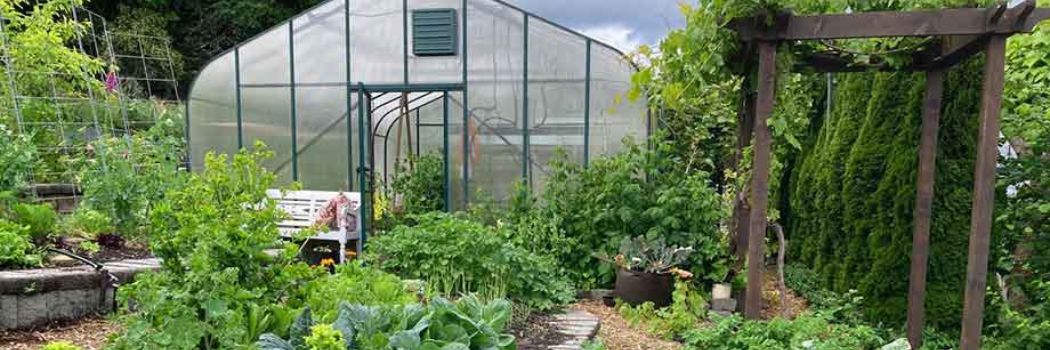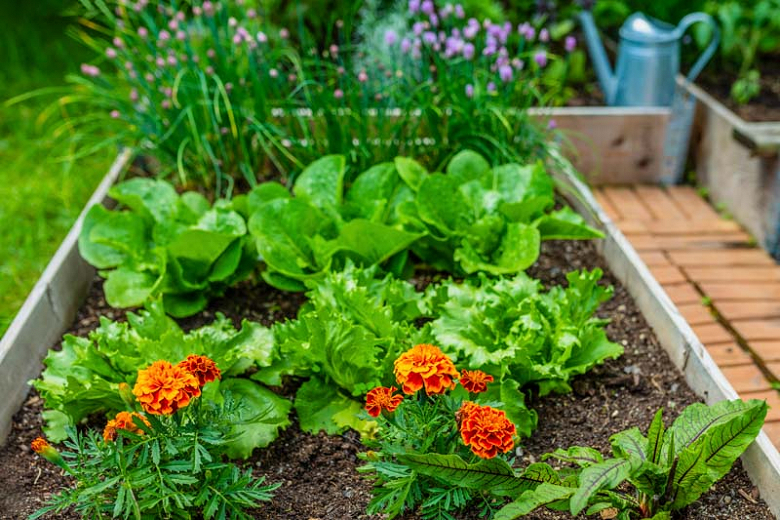The Hibiscus Companion Vegetable Garden: A Surefire Way To Grow Beautiful Flowers And Tasty Food
The Hibiscus Companion Vegetable Garden: A Surefire Way to Grow Beautiful Flowers and Tasty Food
Hibiscus are some of the most beautiful flowers in the world, and they can also be a great addition to your vegetable garden. When planted as companion plants, hibiscus can help to attract pollinators, repel pests, and improve the overall health of your garden.
In this blog post, we will discuss the benefits of companion planting with hibiscus, and we will provide a list of some of the best vegetables to plant alongside them. We will also give you some tips on how to plant and care for your hibiscus companion vegetable garden.
Benefits of Companion Planting with Hibiscus
There are many benefits to companion planting with hibiscus. Here are a few of the most important ones:
- Attract pollinators: Hibiscus are a magnet for pollinators, such as bees, butterflies, and hummingbirds. These pollinators are essential for a healthy garden, as they help to pollinate plants and produce fruit.
- Repel pests: Some hibiscus varieties have a strong scent that can repel pests, such as aphids, whiteflies, and Japanese beetles. This can help to keep your vegetable garden free of pests, which can save you time and money on pest control.
- Improve soil health: Hibiscus can help to improve the overall health of your soil by adding nutrients and organic matter. This can make your soil more fertile and productive, which can lead to better yields of vegetables.
Best Vegetables to Plant with Hibiscus
There are many different vegetables that can be planted with hibiscus. Here are a few of the best ones:
- Beans: Beans are a great companion plant for hibiscus because they fix nitrogen in the soil. This can help to improve the fertility of your soil and make it more productive.
- Carrots: Carrots are a good companion plant for hibiscus because they both attract pollinators. This can help to ensure that your garden is well-pollinated, which can lead to better yields of both vegetables.
- Cucumbers: Cucumbers can be planted with hibiscus to help repel pests. The strong scent of hibiscus can help to keep cucumber beetles away, which can save you time and money on pest control.
- Lettuce: Lettuce is a good companion plant for hibiscus because it doesn't require a lot of space. This means that you can plant them together in the same bed without them competing for resources.
- Peas: Peas are a great companion plant for hibiscus because they help to suppress weeds. The roots of peas release a chemical that inhibits the growth of weeds, which can help to keep your garden looking neat and tidy.
How to Plant and Care for Your Hibiscus Companion Vegetable Garden
To plant a hibiscus companion vegetable garden, you will need to choose a sunny spot in your yard. The soil should be well-drained and fertile. Once you have chosen a spot, you can start planting your vegetables.
When planting your vegetables, be sure to space them according to their mature size. This will help to prevent them from competing for resources. You should also water your garden regularly, especially during the hot summer months.
To care for your hibiscus companion vegetable garden, you will need to fertilize it regularly. You should also deadhead your hibiscus flowers to encourage more blooms.
With a little care and attention, your hibiscus companion vegetable garden will thrive and provide you with beautiful flowers and tasty food.
Conclusion
Hibiscus are a beautiful and versatile plant that can be a great addition to your vegetable garden. When planted as companion plants, hibiscus can help to attract pollinators, repel pests, and improve the overall health of your garden.
If you are looking for a way to add beauty and productivity to your garden, consider planting a hibiscus companion vegetable garden. You won't be disappointed.
Hibiscus plants are beautiful and can add a touch of tropical flair to any garden. But did you know that there are also some great companion vegetables that can be planted with hibiscus?
Companion planting is a gardening technique that involves planting different types of plants together to benefit each other. For example, some vegetables can help to attract beneficial insects that will help to control pests, while others can help to improve the soil quality.
So, what are some good companion vegetables for hibiscus? Here are a few suggestions:
- Sweet potato vines: These fast-growing vines can help to suppress weeds and provide ground cover. They also have attractive foliage that can complement the flowers of your hibiscus plant.
- Caladiums: These colorful plants are a great addition to any tropical garden. They can help to attract pollinators and improve the soil quality.
- Daylilies: These long-blooming flowers are a great way to extend the color palette of your garden. They can also help to attract beneficial insects.
- Bee balm: This fragrant herb is a magnet for pollinators. It can also help to improve the soil quality and repel pests.
If you're looking for more information about hibiscus companion vegetables, I recommend visiting Gardenia Inspiration. This website has a wealth of information about companion planting, including a list of specific vegetables that are good to plant with hibiscus.
FAQ of hibiscus companion vegetables
Q1: What are companion plants for hibiscus?
A: Companion plants are those that benefit each other when grown together. Some good companion plants for hibiscus include:
- Alyssum: This groundcover attracts pollinators, which help to pollinate the hibiscus flowers.
- Beans: Beans fix nitrogen in the soil, which can benefit the hibiscus.
- Carrots: Carrots help to repel pests that can damage hibiscus plants.
- Cucumbers: Cucumbers help to suppress weeds, which can compete with hibiscus for water and nutrients.
- Lettuce: Lettuce helps to attract beneficial insects, which can help to control pests.
Q2: What are the benefits of companion planting with hibiscus?
A: There are several benefits to companion planting with hibiscus, including:
- Increased pollination: Companion plants that attract pollinators, such as alyssum, can help to increase the pollination of hibiscus flowers. This can lead to more blooms and a better harvest.
- Improved soil health: Companion plants that fix nitrogen in the soil, such as beans, can help to improve the soil health around hibiscus plants. This can make the soil more fertile and better able to support the growth of hibiscus plants.
- Reduced pest pressure: Companion plants that repel pests, such as carrots, can help to reduce the pest pressure on hibiscus plants. This can help to keep hibiscus plants healthy and free from pests.
- Increased biodiversity: Companion planting can help to increase the biodiversity in a garden. This can benefit the garden ecosystem as a whole and help to attract beneficial insects and pollinators.
Q3: How do I choose companion plants for hibiscus?
A: When choosing companion plants for hibiscus, it is important to consider the following factors:
- The needs of the hibiscus plant: Hibiscus plants have different needs, such as soil type, water requirements, and sun exposure. It is important to choose companion plants that have similar needs to the hibiscus plant.
- The benefits of the companion plants: Companion plants can offer a variety of benefits, such as attracting pollinators, fixing nitrogen in the soil, or repelling pests. It is important to choose companion plants that offer the benefits that you are looking for.
- The compatibility of the companion plants: Some companion plants can be incompatible with each other. It is important to research the compatibility of the companion plants before planting them together.
Q4: How do I plant companion plants with hibiscus?
A: When planting companion plants with hibiscus, it is important to follow these steps:
- Choose a location that is sunny and has well-drained soil.
- Prepare the soil by adding compost or manure.
- Plant the hibiscus plant in the center of the planting area.
- Plant the companion plants around the hibiscus plant, spacing them according to their mature size.
- Water the plants well.
Q5: How do I care for companion plants with hibiscus?
A: The care requirements for companion plants vary depending on the type of plant. However, some general care tips include:
- Water the plants regularly, especially during hot, dry weather.
- Fertilize the plants according to their needs.
- Remove weeds around the plants.
- Monitor the plants for pests and diseases.
Image of hibiscus companion vegetables
- Cucumbers: Cucumbers and hibiscus are both heavy feeders, so they can benefit from each other's nutrients. Cucumbers also help to shade the hibiscus roots, which can help to prevent them from drying out.

- Beans: Beans are nitrogen-fixing plants, which means they can help to improve the soil quality for the hibiscus. They also help to suppress weeds, which can give the hibiscus more space to grow.

- Carrots: Carrots and hibiscus can help to repel pests from each other. Carrots emit a scent that can deter carrot flies, while hibiscus can help to repel aphids.

- Lettuce: Lettuce and hibiscus are both cool-season plants, so they can be planted together in the spring or fall. Lettuce also helps to suppress weeds, which can give the hibiscus more space to grow.

- Peas: Peas and hibiscus are both nitrogen-fixing plants, so they can help to improve the soil quality for each other. They also help to suppress weeds, which can give the hibiscus more space to grow.

Post a Comment for "The Hibiscus Companion Vegetable Garden: A Surefire Way To Grow Beautiful Flowers And Tasty Food"